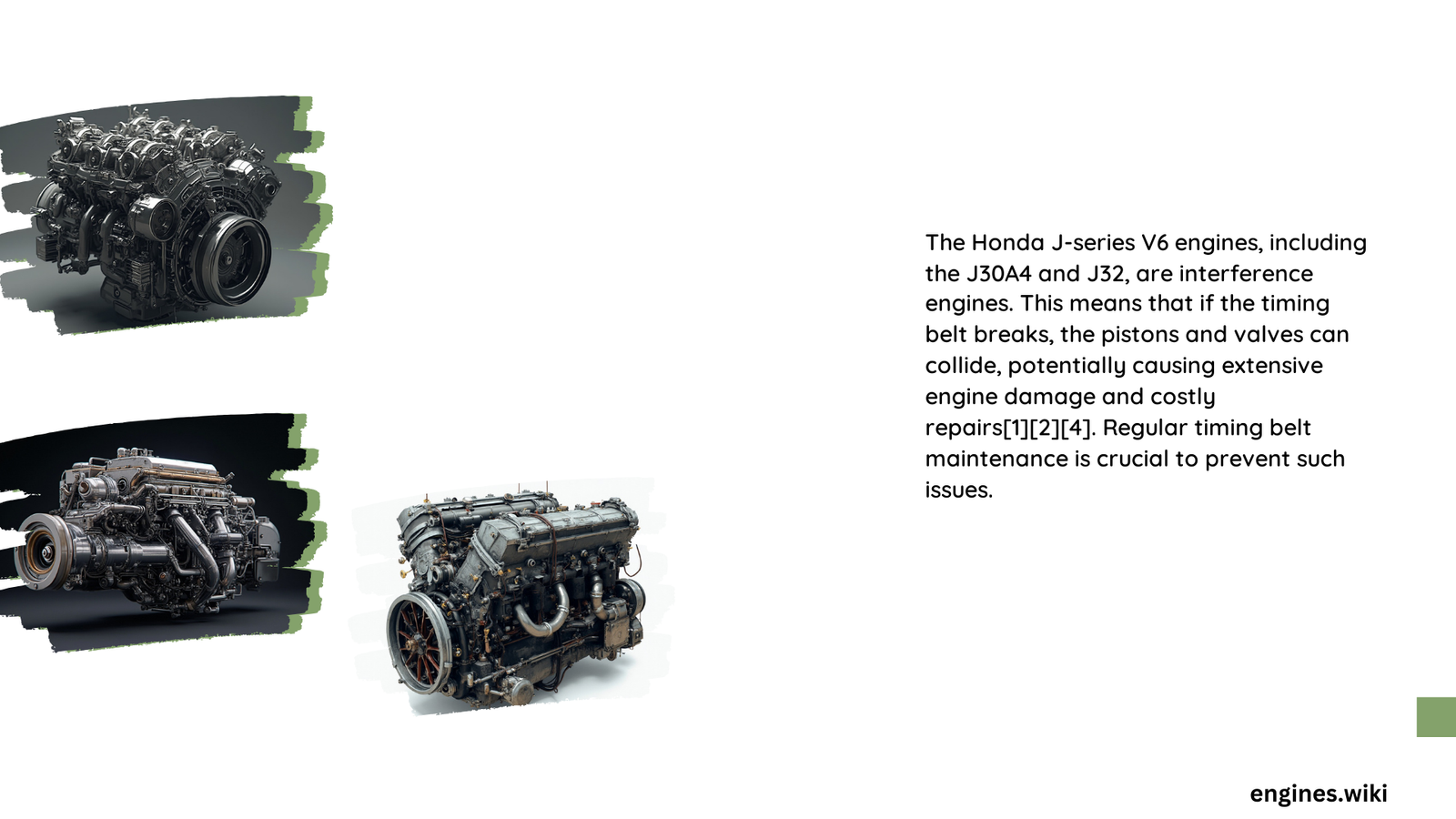The Honda J series engine is a popular V6 powerplant known for its reliability and performance. This article explores the interference nature of the J series engine, its specifications, maintenance requirements, and overall reliability. Understanding whether the Honda J series is an interference engine is crucial for owners and enthusiasts to ensure proper maintenance and avoid potential costly repairs.
Is the Honda J Series an Interference Engine?
Yes, the Honda J series engine is indeed an interference engine. This design characteristic has significant implications for engine maintenance and potential risks in case of timing belt failure. Let’s delve deeper into what this means for J series engine owners.
What Does Interference Engine Mean?
An interference engine is a type of internal combustion engine where the pistons and valves occupy the same space in the cylinder at different times during the engine’s cycle. This design relies on precise timing to prevent collisions between these components. In contrast, non-interference engines have enough clearance between the pistons and valves to prevent contact even if the timing belt fails.
How Does the Interference Design Affect the J Series?
The interference design of the Honda J series engine means:
- Timing belt maintenance is critical
- Belt failure can lead to severe engine damage
- Regular inspections are essential
- Replacement intervals must be strictly followed
What Are the Specifications of the Honda J Series Engine?

The Honda J series encompasses a range of V6 engines with varying specifications. Here’s a breakdown of some key models:
| Model | Displacement | Bore x Stroke | Compression Ratio | Power Output |
|---|---|---|---|---|
| J32A1 | 3.2L | 89mm x 86mm | 9.8:1 | 225 hp @ 5600 rpm |
| J32A2 | 3.2L | 89mm x 86mm | 10.5:1 | 260 hp @ 6200 rpm |
| J35Z6 | 3.5L | 89mm x 93mm | 11.2:1 | 280 hp @ 6200 rpm |
These engines feature:
- 60° V6 configuration
- Aluminum block and cylinder heads
- SOHC or DOHC valve trains
- VTEC variable valve timing (on some models)
When Should the Timing Belt Be Replaced on a J Series Engine?
Given the interference design, timing belt replacement is crucial for J series engines. Here are the key points:
- Recommended interval: 90,000 to 105,000 miles (varies by model)
- Cost: $600-$1,400 (including parts and labor)
- Includes: Timing belt, water pump, tensioner, and idler pulley
What Are the Steps for Timing Belt Replacement?
- Prepare the vehicle and gather necessary tools
- Remove accessory belts and components for access
- Mark timing components for proper realignment
- Remove old timing belt and associated components
- Install new timing belt, ensuring proper tension and alignment
- Replace water pump (recommended)
- Reassemble all components
- Verify proper timing and operation
How Reliable Is the Honda J Series Engine?
The Honda J series engine is generally considered reliable, but like all engines, it has its strengths and potential issues:
Strengths:
- Robust design
- Smooth power delivery
- Longevity (200,000+ miles with proper maintenance)
Common Issues:
- Timing belt failure (if not replaced on schedule)
- Oil leaks (valve cover gaskets, oil pan)
- Transmission issues (in some models)
Maintenance Tips for Longevity:
- Adhere to recommended oil change intervals
- Replace timing belt on schedule
- Monitor coolant levels and quality
- Address any unusual noises or performance issues promptly
How Does the Interference Design Impact J Series Reliability?
The interference design of the J series engine doesn’t inherently reduce reliability, but it does increase the potential for catastrophic damage if the timing belt fails. This makes regular maintenance even more critical for these engines compared to non-interference designs.
Key points:
– Timing belt failure can result in bent valves and piston damage
– Proper maintenance is essential to prevent costly repairs
– The design contributes to the engine’s efficiency and performance
In conclusion, the Honda J series being an interference engine underscores the importance of timely maintenance, particularly regarding the timing belt. While this design choice presents potential risks, it also contributes to the engine’s overall performance and efficiency. By following recommended maintenance schedules and addressing issues promptly, owners can enjoy the power and reliability of the J series engine for many miles.
References:
1. Honda J engine – Wikipedia
2. 2004 Accord V6 an interference engine? – Honda Accord Forum
3. Do the V6 Accords have interference engines? Yes – Drive Accord
